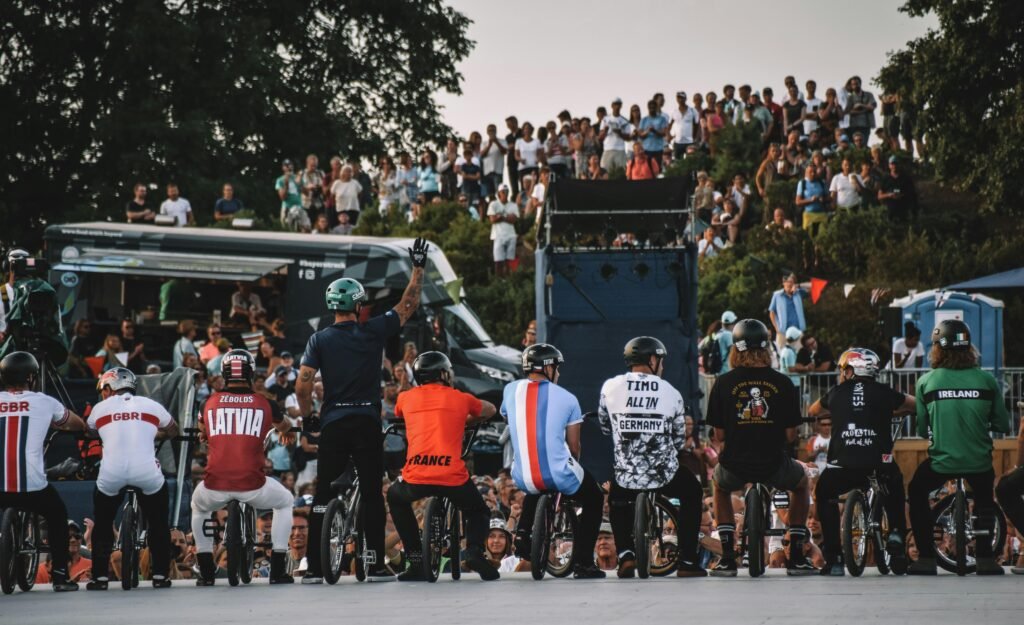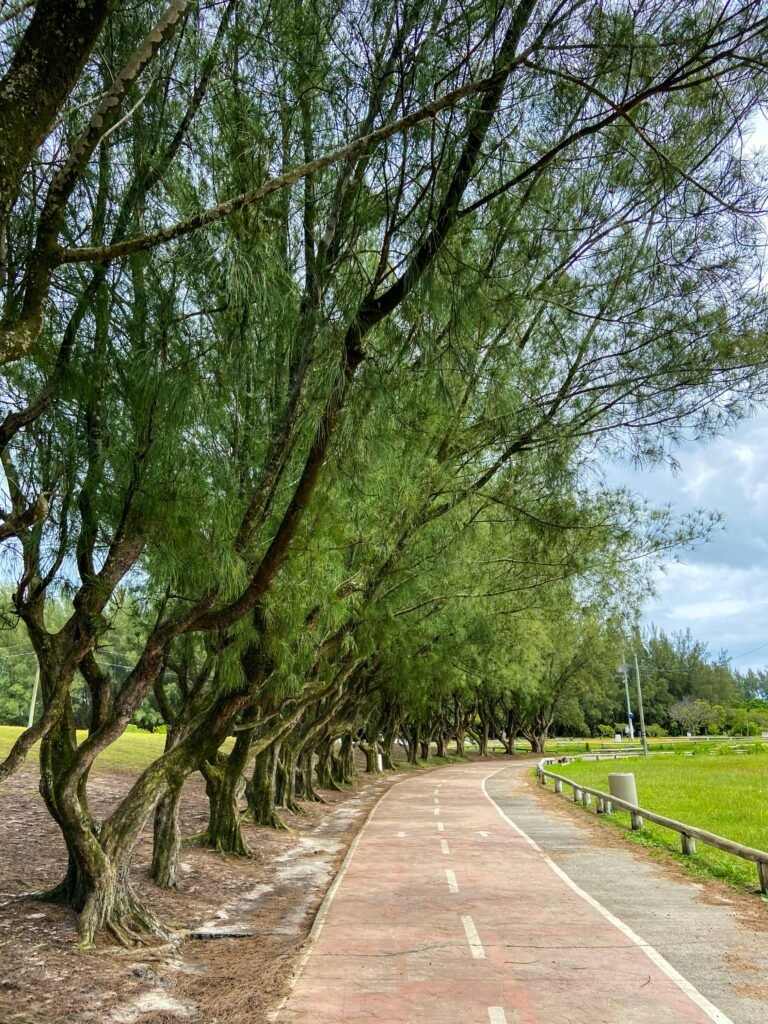Maintaining your dirt bike is crucial to ensure optimal performance and extend its lifespan. To help you keep your bike in top shape, this article highlights the 5 essential parts you need to pay attention to for dirt bike maintenance. From the sprockets and chain to the air filter and brakes, these components play a vital role in the smooth functioning and overall safety of your dirt bike. By regularly inspecting and replacing these parts when necessary, you can enjoy a longer-lasting, more reliable ride on the trails.

This image is property of images.pexels.com.
Air Filters
Dirt bikes are designed to tackle rough terrains and dusty trails, which means their air filters work hard to keep the engine running smoothly. It is crucial to replace the air filters regularly to maintain optimal performance. Over time, dirt and debris accumulate and clog the filter, restricting airflow and negatively impacting the bike’s power output. By replacing the air filters at recommended intervals, usually every 10 to 20 hours of riding, you ensure that clean air reaches the engine, preventing any potential damage or loss of power.
But replacing the air filters alone is not enough; cleaning them properly is equally essential. After each ride, make it a habit to remove the filter and inspect it for dirt and debris. Gently tapping the filter against a hard surface can help dislodge some of the particles. To thoroughly clean the filter, use a specially formulated air filter cleaner or mild soap and water. Rinse it thoroughly and let it dry completely before reinstalling it. Remember to follow the manufacturer’s guidelines to ensure you clean the filter correctly without causing any damage. A clean air filter guarantees better engine performance and longevity.
While cleaning your air filter, it’s also important to inspect it for any signs of damage. Check for tears, holes, or worn-out sections that could compromise its effectiveness. If you notice any damage, it’s best to replace the filter immediately to prevent any debris from entering the engine. Regularly inspecting and maintaining your air filters will go a long way in preserving your dirt bike’s engine and ensuring top-notch performance on every ride.
Oil and Oil Filters
As the lifeblood of your dirt bike’s engine, oil plays a crucial role in lubricating its various components and reducing friction. To maintain optimal engine performance, it is vital to change the oil at regular intervals. Every 10 to 20 hours of riding or as recommended by the manufacturer, you should drain the old oil and replace it with fresh oil. Doing so ensures that the engine remains properly lubricated, minimizing wear and tear on its moving parts.
When changing the oil, it’s equally important to use the right type of oil for your dirt bike. Different bikes have specific oil requirements, so consult your owner’s manual or reach out to a knowledgeable professional to determine the proper oil grade and viscosity for your bike. Using the wrong oil can lead to engine damage and performance issues.
In addition to changing the oil, it’s essential to replace the oil filter regularly. The oil filter traps contaminants and debris, preventing them from circulating through the engine. Over time, the filter becomes saturated with these particles and can no longer effectively filter the oil. By replacing the oil filter at every oil change, you ensure that the oil remains clean and free from any damaging particles. Remember to follow the manufacturer’s instructions while replacing the oil filter and always use a high-quality filter to maintain the integrity of your dirt bike’s engine.
Spark Plugs
Spark plugs are crucial for igniting the air and fuel mixture in the engine’s combustion chamber. Over time, they can become worn out or fouled, leading to misfires, reduced power, and poor fuel efficiency. It is important to replace the spark plugs as recommended by the manufacturer to maintain optimal engine performance.
Regularly checking your spark plugs for wear and tear is a good practice. Remove the spark plug and inspect its condition. Look for signs of fouling, such as carbon deposits or oil residue on the spark plug’s electrode. If you notice any irregularities or damage, it’s time to replace the spark plug.
When installing a new spark plug, it’s crucial to properly gap it. The electrode gap determines the spark’s intensity and can affect the engine’s performance. Refer to your owner’s manual or the spark plug manufacturer’s specifications to determine the correct electrode gap for your dirt bike. Use a spark plug gap tool to adjust the gap precisely before installing the new spark plug. Properly gapping the spark plug ensures efficient combustion and reliable engine operation.
Chain and Sprockets
The chain and sprockets are vital components of a dirt bike that transmit power from the engine to the rear wheel. Proper maintenance of these parts is crucial for smooth power transfer and ensuring a long-lasting chain and sprocket life.
Regularly cleaning and lubricating the chain is essential to prevent excessive wear and corrosion. After every ride, inspect the chain for dirt, debris, or excessive build-up of lubricant. Use a stiff-bristle brush and a chain cleaner to remove any grime or dirt from the chain. Once cleaned, apply a high-quality chain lubricant to ensure smooth movement and reduce friction. Be careful not to over-lubricate as it can attract more dirt and debris.
Checking the chain tension is equally important. A loose chain can lead to poor power transfer and potential damage to the sprockets. To check the tension, lift the rear wheel off the ground and locate the chain adjusters on the swingarm. Follow your owner’s manual or the manufacturer’s instructions to ensure the correct tension according to your bike’s specifications. Adjust the chain tension accordingly, making sure it has the appropriate amount of slack without excessive sag.
Lastly, inspecting the chain and sprockets for wear is crucial for maintaining safety and optimal performance. Look for signs of elongation or wear on the chain links and check the sprocket teeth for signs of hooking or excessive wear. If you notice any significant wear or damage, it’s best to replace the chain and sprockets as a set to ensure proper functionality and prevent any potential accidents.

This image is property of images.pexels.com.
Brake Pads
Brakes are crucial for safety and control while riding a dirt bike. Regularly inspecting and maintaining the brake pads is essential to ensure optimal stopping power and prevent potential accidents.
One of the key aspects of brake pad maintenance is to replace them when they are worn out. Depending on your riding style and conditions, brake pads can wear at different rates. Check the thickness of your brake pads regularly and compare them to the manufacturer’s specifications. If they have worn down significantly or reached the minimum recommended thickness, it’s time to replace them. Riding with worn brake pads can compromise your ability to stop efficiently and safely.
In addition to thickness, inspecting the brake discs is equally important. Look for any signs of scoring, warping, or other damage on the brake discs. Damaged brake discs can cause uneven braking, vibrations, or reduced stopping power. If you notice any issues with the brake discs, it’s advisable to have them inspected or replaced by a qualified mechanic to ensure your bike’s safe operation.
Properly maintaining your brake pads and discs not only improves your dirt bike’s safety but also enhances your riding experience. Regularly check and replace worn brake pads, and ensure the brake discs are in good condition to enjoy reliable stopping power on every ride.
Tires
Tires play a crucial role in providing traction, stability, and control on various terrains. Regularly inspecting and maintaining your dirt bike’s tires is essential to ensure optimal performance and safety.
Checking the air pressure regularly is a fundamental aspect of tire maintenance. Properly inflated tires not only improve handling but also prolong tire life. Use a quality tire pressure gauge to check the air pressure, and refer to your owner’s manual or the manufacturer’s recommendations for the correct pressure values. Underinflated tires can lead to reduced control, poor handling, and increased tire wear, while overinflating can negatively affect traction and ride comfort.
Inspecting the tires for damage is equally important. Look for cuts, punctures, or bulges on the tire sidewalls and tread area. If you notice any significant damage, it’s best to replace the tire immediately to avoid any potential blowouts or loss of control while riding. Additionally, regularly check the tread depth. Worn-out tread not only reduces traction but also makes your dirt bike more susceptible to hydroplaning in wet conditions. If the tread is significantly worn and the wear bars are visible, it’s time to invest in new tires for optimal safety and performance.
Regular tire maintenance, including proper inflation and careful inspection, will go a long way in ensuring your dirt bike’s optimal performance and safety on every ride. Don’t overlook the importance of maintaining your tires, as they are one of the most critical components of your dirt bike.

This image is property of images.pexels.com.
Suspension
A well-maintained suspension system is essential for a smooth and controlled ride on your dirt bike. Proper maintenance of the fork and shock absorbers ensures optimal performance and extends their lifespan.
Regularly servicing the fork and shock absorbers is crucial, especially if you ride in rough terrains or encounter challenging obstacles frequently. Following your owner’s manual or the manufacturer’s recommendations, schedule regular service intervals to change the fork oil, inspect seals, and maintain proper functionality. Servicing the suspension system ensures consistent damping, improves handling, and enhances overall ride quality.
Checking for leaks is another important aspect of suspension maintenance. Inspect the fork seals and shock absorber seals for any signs of oil leakage. If you notice oil residue or a noticeable loss of oil, it’s essential to have the seals replaced immediately to prevent damage to the internal components and ensure optimal suspension performance. Regularly cleaning and lubricating the seals can help extend their lifespan and prevent premature wear.
Lastly, adjusting the sag and suspension settings is crucial for achieving optimal performance and comfort. Sag refers to the amount of suspension travel used when the bike is weighted, and proper sag settings ensure the suspension is set up correctly for your weight and riding style. Refer to your owner’s manual or consult with a professional to determine the ideal sag settings for your dirt bike. Adjusting the compression and rebound damping settings according to your preferences and riding conditions can further fine-tune the suspension and maximize your bike’s performance.
By regularly maintaining your dirt bike’s suspension system, you ensure a smoother ride, better handling, and improved control over various terrains and obstacles.
Cables and Levers
The cables and levers of your dirt bike play a crucial role in controlling various functions, such as the clutch, throttle, and brakes. Proper maintenance ensures smooth operation and enhances your riding experience.
Ensuring proper operation of the cables and levers is essential for safety and control. Regularly inspect each cable and lever to ensure they move freely and smoothly. Check for any signs of binding, fraying, or excessive wear. If you notice any issues, it’s important to address them promptly to prevent unexpected failures or compromised control while riding.
Lubricating the cables is another maintenance task that should not be overlooked. Use a dedicated cable lubricant or a light oil to lubricate the cables, ensuring that the lubricant reaches all the necessary points. Lubrication reduces friction, extends cable life, and ensures smooth operation. Avoid using excessive lubricant as it can attract dirt and debris, leading to potential cable damage or sticking.
While inspecting and lubricating the cables, it’s essential to also examine the levers for any signs of damage. Check for cracks, bends, or other visible defects that could compromise their functionality. If you notice any issues, it’s best to replace the levers immediately to ensure reliable operation and control while riding.
Maintaining the cables and levers of your dirt bike is essential for safe and enjoyable riding. By regularly inspecting, lubricating, and replacing damaged components, you ensure optimal control and a superior riding experience every time you hit the trails.
Electrical System
The electrical system of your dirt bike plays a vital role in powering various components, including the ignition, lights, and electrical accessories. Regular maintenance is essential to ensure proper operation and prevent any electrical failures.
Checking the battery and charging system is an important aspect of electrical system maintenance. Inspect the battery terminals for any signs of corrosion or loose connections. Clean the terminals and tighten any loose connections to ensure a reliable electrical connection. Additionally, verify that the battery is holding a proper charge by using a voltmeter or consulting a professional. If the battery is weak or not holding a charge, it may need to be replaced.
Inspecting the wiring and connectors is equally important to prevent any potential electrical failures. Look for any signs of frayed or damaged wiring, loose connections, or exposed wires. Ensure that all the connectors are securely fastened and free from corrosion. If you notice any issues, seek professional assistance to repair or replace the damaged components.
Testing the electrical components regularly is a proactive maintenance measure. Check the operation of the headlights, brake lights, turn signals, and any other electrical accessories specific to your bike. If any component is not functioning correctly, diagnose the issue and address it promptly to ensure optimal electrical system performance.
Proper maintenance of the electrical system is essential for reliable operation and to prevent any unexpected failures while riding. By regularly checking the battery, wiring, connectors, and testing the electrical components, you ensure a hassle-free and enjoyable riding experience on your dirt bike.
Fuel System
The fuel system is responsible for delivering clean and properly mixed fuel to the engine for combustion. Regular maintenance is crucial to keep the fuel system functioning optimally and prevent any potential issues.
Cleaning the carburetor or fuel injector is an important maintenance task. Over time, dirt and debris can clog the jets of the carburetor or injectors, affecting fuel flow and engine performance. Consult your owner’s manual or reach out to a professional to determine the recommended cleaning procedure for your specific model. If you are not confident in performing this task, it’s best to have a qualified mechanic handle it for you.
Inspecting the fuel lines and filters is equally important to maintain a clean and uninterrupted fuel supply. Check for any signs of damage, such as cracks or leaks, on the fuel lines. Replace any damaged lines immediately to prevent fuel leaks or engine damage. Additionally, regularly inspect and replace the fuel filters as recommended by the manufacturer. Clogged fuel filters can restrict fuel flow and potentially damage the engine. Carefully follow the instructions provided by the manufacturer to ensure correct installation and prevent any fuel system complications.
Draining old fuel regularly is a crucial fuel system maintenance step. Fuel can become stale over time, leading to engine issues and decreased performance. If your dirt bike will be sitting idle for an extended period, consider draining the fuel tank or using a fuel stabilizer to prevent fuel degradation. Always use fresh, clean fuel to ensure optimal engine performance and prevent potential fuel-related problems.
Proper maintenance of the fuel system ensures efficient fuel delivery and optimal engine performance on every ride. By cleaning the carburetor or fuel injector, inspecting the fuel lines and filters, and regularly draining old fuel, you keep your dirt bike’s fuel system in top shape and minimize the risk of fuel-related issues.
